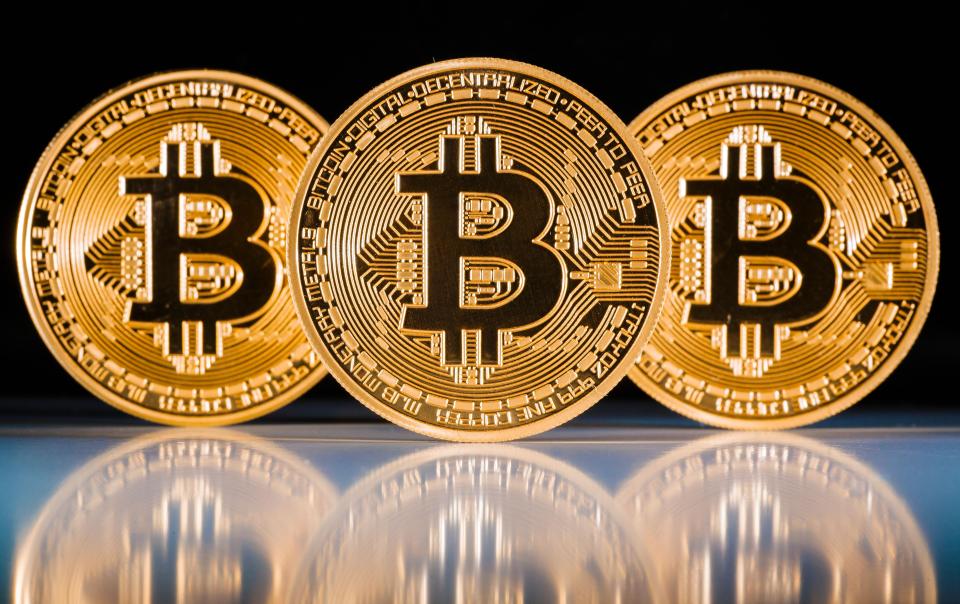Tulip mania
When Bitcoin first appeared the world largely dismissed it as a fad, yet current predictions tell us it may transform the pillars of our society. At the core of the technology that gave rise to Bitcoin lies blockchain, which some claim to be just as significant as the Internet itself.
But how did it all start?
At the end of the last decade Satoshi Nakamoto* published details of a decentralised system in which it is possible to store and move money without the involvement of the classic monetary players (e.g. banks, clearing houses), while still eliminating the risk of counterfeiting** or subsequent modification. In order to achieve this, he developed a data structure called a blockchain, as well as a protocol for adding new transactions. Through these it became possible to handle money electronically without involving a third party.

A blockchain is in fact a chain of ‘blocks’, or packages, which contain hundreds of financial transactions that have occurred all over the globe. New transactions initiated are added to the blockchain network’s transaction list. When about 350 transactions*** are collected, they are linked to the chain as a block. Blocks are linked in a way to prevent any removal of blocks and then the re-connection of the remaining neighbouring blocks with each other. The chain cannot be subsequently modified, and linking the blocks is only possible by completing a costly series of operations.
And that’s where block miners come into the picture.
Miners set up high-performance computers to solve complex mathematical problems, which are required for a block to be created and linked to a chain.
What do these problems look like?
First, we need to understand the concept of hashing. A hash is a string of characters created by a hash algorithm created by taking an arbitrary amount of input data and creating a shorter, fixed size string, called a hash. The ‘mining machine’ first calculates the block’s hash. The problem to be solved goes like this: find the number (a.k.a. the nonce) which, if integrated into the block’s hash, will create a new hash that will meet certain criteria, e.g. it will start with four 0s. Now, that is difficult to find.
Once the blockchain mines of the world detect that a block of transactions has been executed, they begin to compete with each other in solving the next puzzle.
A world-wide competition begins, with the reward as its goal.
The reward is an amount of cryptocurrency awarded to the miner who delivers the solution first. Cryptocurrencies (Bitcoin, Ether etc.) have a current rate fixed in dollars, euros, etc. Bitcoin is therefore a blockchain based digital currency. Through its protocol and software, the network of computers operates a shared ledger via the internet. Although Bitcoin’s market capitalisation is the largest, there are now hundreds of cryptocurrencies.
Due to of their globally decentralised nature, these systems cannot be stopped or eliminated. There is no geopolitical situation or intelligence service that could halt their operation. The blockchain cannot be turned off.

Who is behind the mining machines?
Anyone who is able to assemble a dedicated machine worth around two to three thousand dollars.
Larger mines, however, are huge machine rooms, hangars, where tens of thousands of machines unceasingly work, creating a lot of noise. The owners are individuals, companies and even governments with access to the cheap and reliable energy needed to meet the continuous and enormous energy requirements of these mines. It seems that currently China has the most suitable conditions, but rumours are that Russia is getting ready to mine cryptocurrency on a government level, and power companies are trying to ally with miners to provide them with cheaper electricity. Moreover, North Korea also appears to have started a massive mining project in the past few weeks.
In Austria, two sisters founded a company called HydroMiner a couple of years ago. They’re mining using cheaper and environmentally friendly energy produced in hydroelectric power plants.
But how good is this business?
At the beginning of this decade Bitcoin mining was easy and many people mined it simply out of curiosity. According to an urban legend, Bitcoins mined by a former IT student from Budapest during his university years reached a value of more than 300 million forints by the start of this summer, and he plans to retire if the value goes up to 1 billion forints.
Today, Bitcoin mining is much more difficult and it is significantly easier to mine other currencies, such as Ether. However, you can easily purchase cryptocurrencies on the market where the exchange rate is based solely on supply and demand and is not influenced by any central players’ legal leverage. Of course, this has its drawbacks. For example, the exchange rate is extremely volatile at this time; it can move thirty percent in one direction in a single day, and then twenty in another the next day. The cryptocurrency market is now a playground of speculators, and presently just under one percent of the earth’s population is involved in this popular game. This number is certainly set to rise.
Forecasts indicate that Bitcoin’s exchange rate will explode over the next ten years. According to some estimates it may even go as high as 50,000 dollars. At this point we are still far from that, but even though it is still typically viewed as an investment tool, it is also increasingly gaining acceptance as a means of payment. Many places in Japan already accept Bitcoin. Cash machines display transaction details (amount, Bitcoin address, transaction ID) in a QR code, the wallet on the phone scans it and initiates the payment. The transaction – as mentioned earlier – is then written into a block. In this specific context the bank account is called an ‘address’ where the payments are moved to and from. The amount transferred from the phone will be sent to the shop’s address.
And what does any of this have to do with tulip mania?
Well, the flower bulbs mentioned in the title were brought to Europe from Istanbul by the then Hapsburg Emperor’s ambassador to the Ottoman Empire. Later, in the late 1500s, a Dutch botanist started to cultivate them in Holland. People went crazy for them, and this ‘tulip mania’ made tens of thousands extremely rich.
However, this all came to a standstill when buyers suddenly started to avoid the tulip bulb auctions. Although the main reason for this was the bubonic plague, the bubble still burst in an instant, and that was the end of the tulip exchange trading. Many cite this story in the context of Bitcoin.
Yet the developments so far suggest we are entering the era of cryptocurrency.
_____________________________
* person or company – their identity is obscured
** to initiate the transaction requires the digital signature of the holder of the money
*** originally 1 megabyte, but it varies by blockchain
2018-05-02
Tulip mania
6 min
Share


